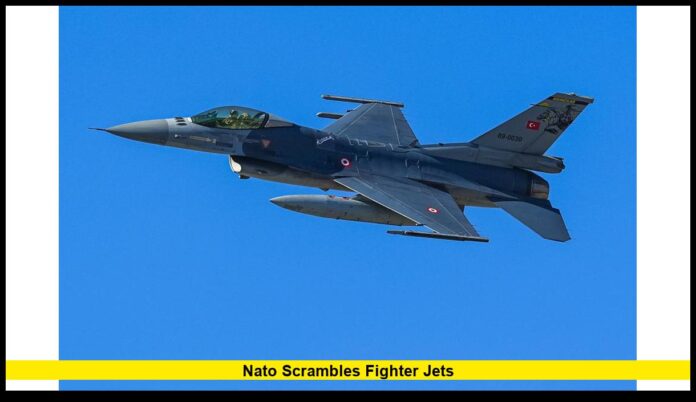NATO fighter jets are in the sky more than ever before. In recent weeks, alliance forces have scrambled aircraft multiple times in response to Russian military activity near European borders. But what does this mean for global security, and why are these incidents happening so frequently?
The Current Situation: A Pattern of Escalation
The numbers tell a compelling story. NATO forces across Europe scrambled more than 400 times in total in 2024, according to Allied Air Command. This isn’t a one-off occurrence – it’s becoming the new normal along Europe’s eastern frontier.
Just this week, NATO member Poland scrambled fighter jets overnight as Russia launched record numbers of drones and missiles at neighboring Ukraine. Meanwhile, Romania scrambled two fighter jets overnight after Russia launched fresh drone attacks close to the alliance’s border with Ukraine.
Why NATO Jets Are Being Scrambled
The reasons behind these scrambles are varied but follow a clear pattern:
Border Security Concerns: When Russian aircraft approach NATO airspace without proper identification or communication with air traffic control, alliance forces respond immediately. Most of the time jets are scrambled when aircraft approach European borders without properly identifying themselves or communicating with air traffic control.
Spillover Effects: The ongoing conflict in Ukraine has created a complex security environment. Drones and missiles entering NATO airspace have not been treated as attacks on the alliance so far, but Polish authorities have repeatedly scrambled aircraft because of Moscow’s aerial attacks on Ukraine.
Intelligence Gathering: Recent incidents include Germany scrambled its fighter jets to intercept a Russian aircraft over the Baltic Sea involving reconnaissance planes with transponders switched off.
The Baltic Sea: Europe’s New Flashpoint
The Baltic Sea has emerged as a particular hotspot for these encounters. According to Bild, this was the ninth such interception mission conducted by German forces in 2025. The frequency of these incidents has led some to describe the Baltic as increasingly militarized waters.
Swedish forces have also been active, with Sweden scrambled military aircraft in response to Russian fighter jets spotted over the southern parts of the Baltic Sea.
What This Means for European Security
These scrambles represent more than routine military exercises – they’re indicators of heightened tensions across Europe. The pattern suggests that NATO allies are operating under increased alertness levels, with air defense systems on standby.
The alliance’s response demonstrates both preparedness and restraint. While jets are scrambled to intercept potentially threatening aircraft, these encounters rarely escalate beyond standard identification and escort procedures.
Looking Ahead: A New Security Reality
The frequency of NATO scrambles reflects a broader shift in European security dynamics. As military activity increases along alliance borders, these rapid-response missions have become a critical component of NATO’s collective defense strategy.
For now, these encounters remain within the bounds of international aviation law, but they serve as a reminder of the delicate balance required to maintain stability in an increasingly tense geopolitical environment.
The message is clear: NATO remains vigilant and ready to respond to any threat to alliance airspace, one scramble at a time.
